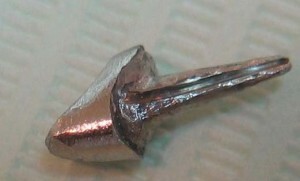 Dental health is an important component of the carefree life of every person. Now dentistry has reached a significant level of development, which allows you to correct not only the aesthetic appearance of the teeth, but also prevent the development of many diseases in the future.
Dental health is an important component of the carefree life of every person. Now dentistry has reached a significant level of development, which allows you to correct not only the aesthetic appearance of the teeth, but also prevent the development of many diseases in the future.
To help in the situation when the tooth is completely destroyed, the cult insert is capable - a convenient product, which allows to install a denture or crown using a special design.
A tab from the impression is made and fixed in the machined hole of the tooth, thanks to the use of a cementitious compound. Such a mechanism promotes a uniform distribution of the load on the tooth and hermetic fit without cracking.
The culture tab restores the anatomical shape of the tooth, its functioning, and is also used in the complete absence of the affected crown part. The tab recreates the stump of the tooth, which consists of two parts: the root and the root, to which the crown is subsequently mounted.
content
Difference from
crowns Many uninitiated people are wondering what is the difference between a crown and a tab? The crown is used during restoration of functions and appearance of the tooth, to strengthen it, covering its entire surface, returning the original appearance to the dentition, corresponds to the individual features of the occlusion.
Obtain crowns in a laboratory way, with the help of making a cast and casting a new exact model-copy from gypsum.
Unlike the crown, the insert is not considered an independent device, but is only an auxiliary basis for prosthetics, and therefore does not affect the nerve.
Tooth culture tabs have a fairly wide list of advantages: 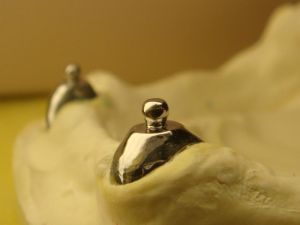
- durability of operation;
- complete imitation of a natural tooth;
- preserving the future integrity of the tooth and its main indicators( color, strength), regardless of food;
- protection against dental caries and pulpitis.
Depending on the state of damage to the dental tissue, restorative and cultic tabs are used, the possibilities of which were mentioned earlier.
The first type is used for minor violations, when it is necessary to restore the natural shape of the tooth and return the color of the crown. It is impossible to determine exactly what will work in this or that case, if you do not go to a professional dentist.
Varieties of solutions
The type of construction products are cast and collapsible.
Molded core insert:
- is used for the restoration of a single-root tooth, since its parts are joined together and can not be disconnected if necessary;
- installation of this design is simpler and takes less time;The
- is based on a cast structure with the main platform and fixing pins to ensure strong attachment in the tooth channel.
Collapsible tab on pins:
- is used to restore a tooth with three or four roots, which is possible due to the presence of removable pins, besides the main ones;The
- collapsible design also follows the shape of the tooth and does not leave any crevices, but requires an installation workshop, in which case one can talk about a lifetime guarantee of such a tab;
- pins are positioned at an angle, which allows you to place the product in the desired position, regardless of the location of the roots.
Two photos, in which a pin-like caulk tab is sequentially shown before it was disassembled and after:
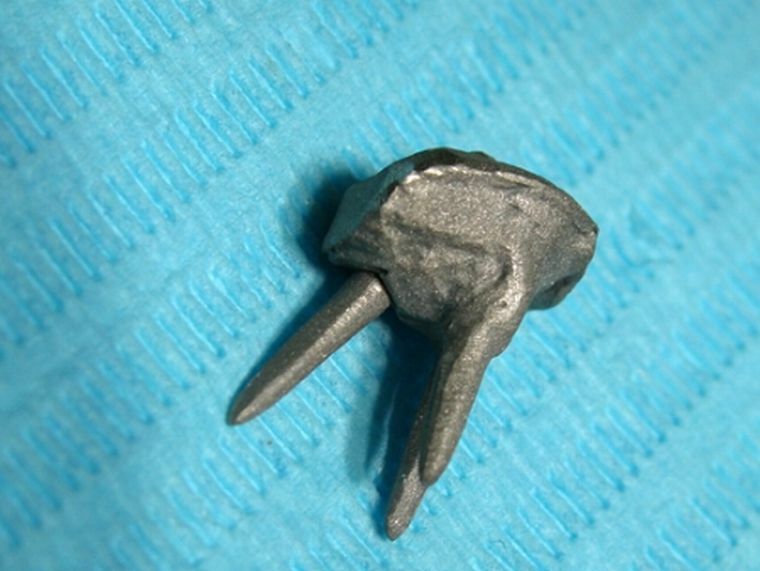
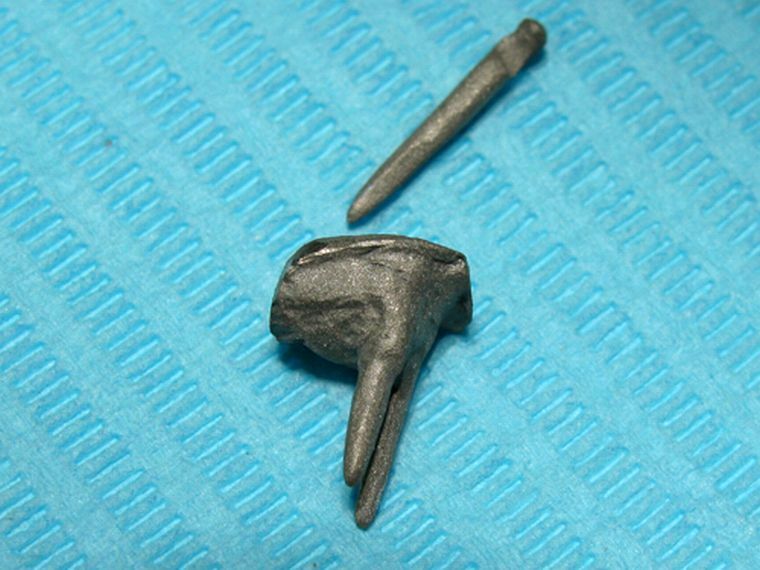
The type of material used is
- Metal : made of chromium-cobalt alloy or using precious metals. Distinctive features are reliability and non-aesthetic appearance, most often they are used for installation on chewing teeth that are not part of the "smile line".
- All-ceramic is made of pressed ceramics and zirconium dioxide. This species is characterized by the transparency and color of the "new tooth"( more similar to natural), which increases their attractiveness and cost. They are not inferior in reliability to metal, but are mainly used to restore the front teeth.
- Metal-ceramic , whose quality is reduced due to the difference in the thermal expansion of metal and ceramics. This is the reason for their frequent loss.
Indications and limitations for the installation of
A culture tab in the tooth is installed in such cases:
- problems with the crown part of the tooth;
- violation of the shape and position of the tooth;
- defects of the tooth region located above the gum;
- no possibility of using filling materials;
- need for support for the bridge;
- need to install a splinting design during periodontal disease.
However, there are restrictions that the doctor pays attention to when working with teeth:
- damage to the root of the tooth;
- availability of allergy to the material used;
- gum disease or root canals;
- teeth mobility.
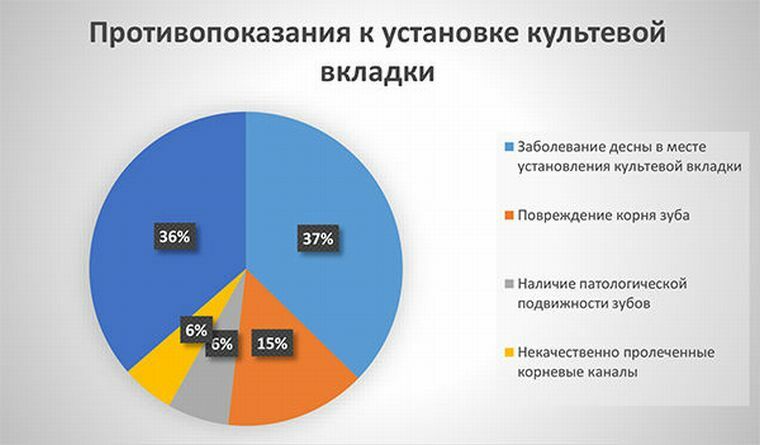
Stages of the
preparation and installation Before the impression is taken, the tooth is prepared for such a procedure, namely, the preparation of the drill is performed, which allows the tooth tissues affected by caries or other disease to be removed and a suitable cavity formed. After removing the impression in the laboratory, a model of gypsum is created, which is compared with the original tooth.
After simulation, the computer transmits information to the milling machine. In the same place, the workpiece is sawed, which is further fired in a special furnace. After that, the prepared cult insert is fixed on the tooth.
It all begins with an examination of the dentist and endodontic therapy. Next, the root is filled and the quality of the filling is checked with the help of an X-ray. After this, work begins on the canal of the tooth, making casts from both jaws and making gypsum models.
After the formation of the model and the shape of the insert and approval by the dentist, the installation of the structure follows by filling the root canals with cement and placing the pins in the required position. After that, the finished element is pressed against the jaw for additional reliability.

Care after installation
After installation, the usual rules of oral hygiene and dental care are required. Doctors advise using a brush with a soft bristle for this purpose, so as not to damage the surface of the structure. The interdental spaces are cleaned with a brush-brush.
We should not forget about the preventive examination, which should take place from two times a year, and compulsory treatment to a specialist for any inconvenience and complaint.
This is what will save the cult tab in good condition and extend its service for a period of more than 10 years.
Practical Evaluation of
Reviews of patients who have been placed with a cult insert and conclusions about the strengths and weaknesses of the product, based on years of experience.
When I had problems with the front teeth, I turned to the dentist. My public profession requires a beautiful smile, so I needed quality and durable work.
With a specialist, we chose a cultic tab of gold, which I do not regret now. The result was even better than I could imagine.
No inconvenience, only healthy teeth and pleasant, not oblique glances around. Of course, everything depends on the dentist, so check the competence and level of your chosen doctor. Be healthy and beautiful!
Oleg, 38
My age is decent for 50, but it does not prevent me from looking like my teeth. The cult insert and crown is a great combination of "for ages".Now I do not feel any problems with chewing and I'm not afraid to smile. I hope that this effect will last for a long time.
Valery Petrovich, 57
Based on the characteristics of professionals and customer testimonials, we can conclude that there are more positive sides in using tabbed tabs than negative ones. Advantages are: 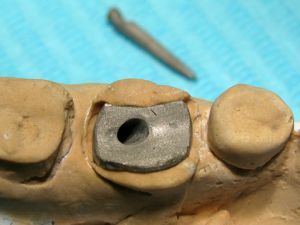
- strength and reliability;
- possibility of improving the shape and overall appearance of the tooth;
- simplifying the installation of other structures and crowns in the presence of severe tooth decay;
- antibacterial and safety of use;
- long service life.
Only the low cost and the need to eliminate living tooth tissues can create frustration for creating a proper fit of the structure.
Cost of installation
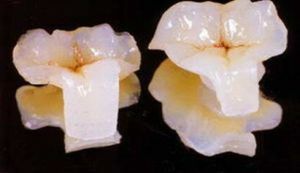 The cost depends on the material selected for the fabrication, the individual doctor's fees and dental technology, and not on the design of the tab.
The cost depends on the material selected for the fabrication, the individual doctor's fees and dental technology, and not on the design of the tab.
The most expensive are ceramic inserts of all-ceramic type( the price reaches 18 thousand rubles), created on gold platinum( about 15 thousand rubles without metal cost) and silver-palladium alloy costing up to 12 thousand rubles without taking into account the price of metal.
But these are the cases when the price is worth the quality. To receive consultation and an ordinary cast for further production can be in the dental centers, paying from 1500 to 3500 rubles.
